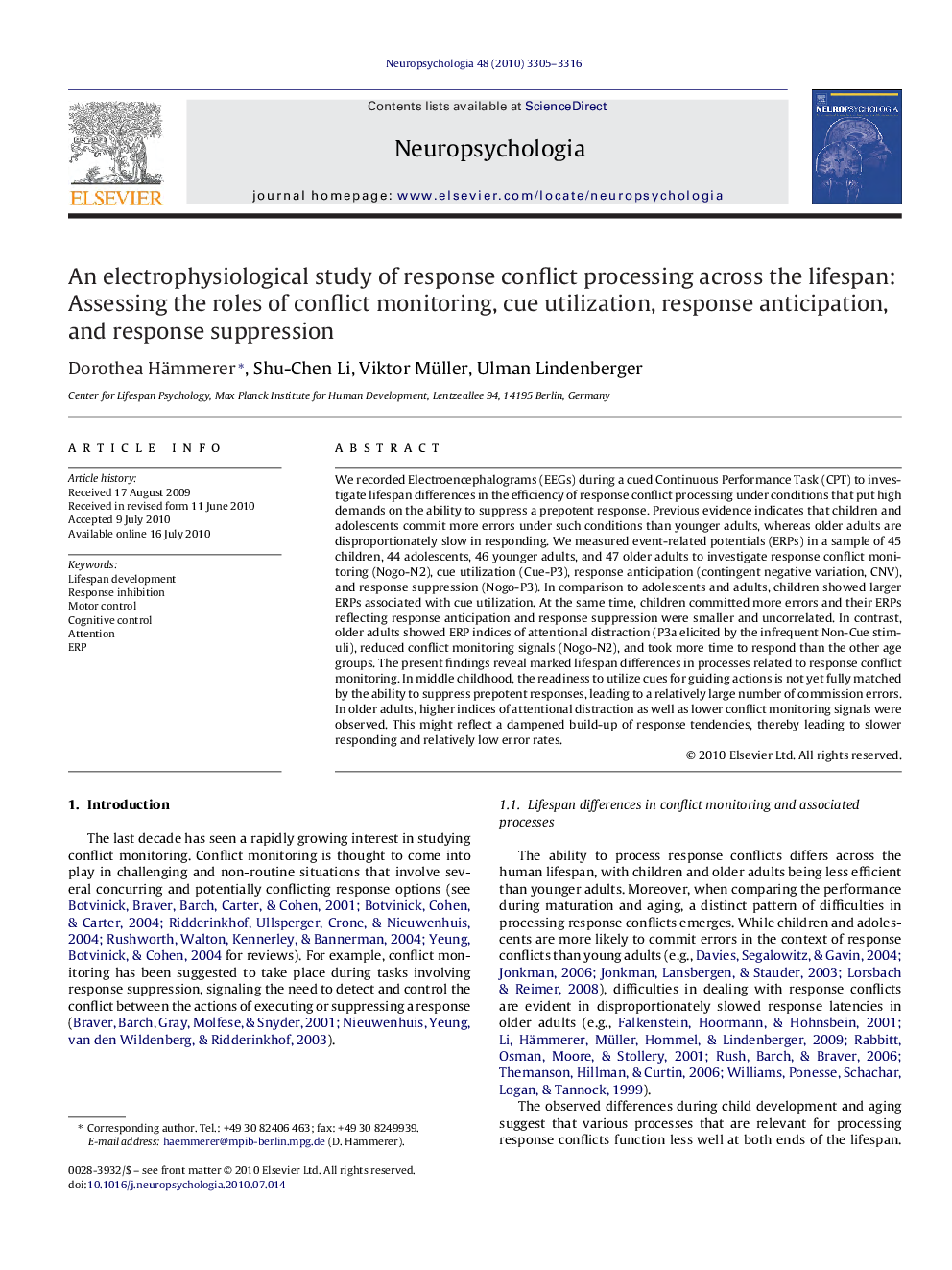| کد مقاله | کد نشریه | سال انتشار | مقاله انگلیسی | نسخه تمام متن |
|---|---|---|---|---|
| 10466005 | 925747 | 2010 | 12 صفحه PDF | دانلود رایگان |
عنوان انگلیسی مقاله ISI
An electrophysiological study of response conflict processing across the lifespan: Assessing the roles of conflict monitoring, cue utilization, response anticipation, and response suppression
دانلود مقاله + سفارش ترجمه
دانلود مقاله ISI انگلیسی
رایگان برای ایرانیان
کلمات کلیدی
موضوعات مرتبط
علوم زیستی و بیوفناوری
علم عصب شناسی
علوم اعصاب رفتاری
پیش نمایش صفحه اول مقاله

چکیده انگلیسی
We recorded Electroencephalograms (EEGs) during a cued Continuous Performance Task (CPT) to investigate lifespan differences in the efficiency of response conflict processing under conditions that put high demands on the ability to suppress a prepotent response. Previous evidence indicates that children and adolescents commit more errors under such conditions than younger adults, whereas older adults are disproportionately slow in responding. We measured event-related potentials (ERPs) in a sample of 45 children, 44 adolescents, 46 younger adults, and 47 older adults to investigate response conflict monitoring (Nogo-N2), cue utilization (Cue-P3), response anticipation (contingent negative variation, CNV), and response suppression (Nogo-P3). In comparison to adolescents and adults, children showed larger ERPs associated with cue utilization. At the same time, children committed more errors and their ERPs reflecting response anticipation and response suppression were smaller and uncorrelated. In contrast, older adults showed ERP indices of attentional distraction (P3a elicited by the infrequent Non-Cue stimuli), reduced conflict monitoring signals (Nogo-N2), and took more time to respond than the other age groups. The present findings reveal marked lifespan differences in processes related to response conflict monitoring. In middle childhood, the readiness to utilize cues for guiding actions is not yet fully matched by the ability to suppress prepotent responses, leading to a relatively large number of commission errors. In older adults, higher indices of attentional distraction as well as lower conflict monitoring signals were observed. This might reflect a dampened build-up of response tendencies, thereby leading to slower responding and relatively low error rates.
ناشر
Database: Elsevier - ScienceDirect (ساینس دایرکت)
Journal: Neuropsychologia - Volume 48, Issue 11, September 2010, Pages 3305-3316
Journal: Neuropsychologia - Volume 48, Issue 11, September 2010, Pages 3305-3316
نویسندگان
Dorothea Hämmerer, Shu-Chen Li, Viktor Müller, Ulman Lindenberger,